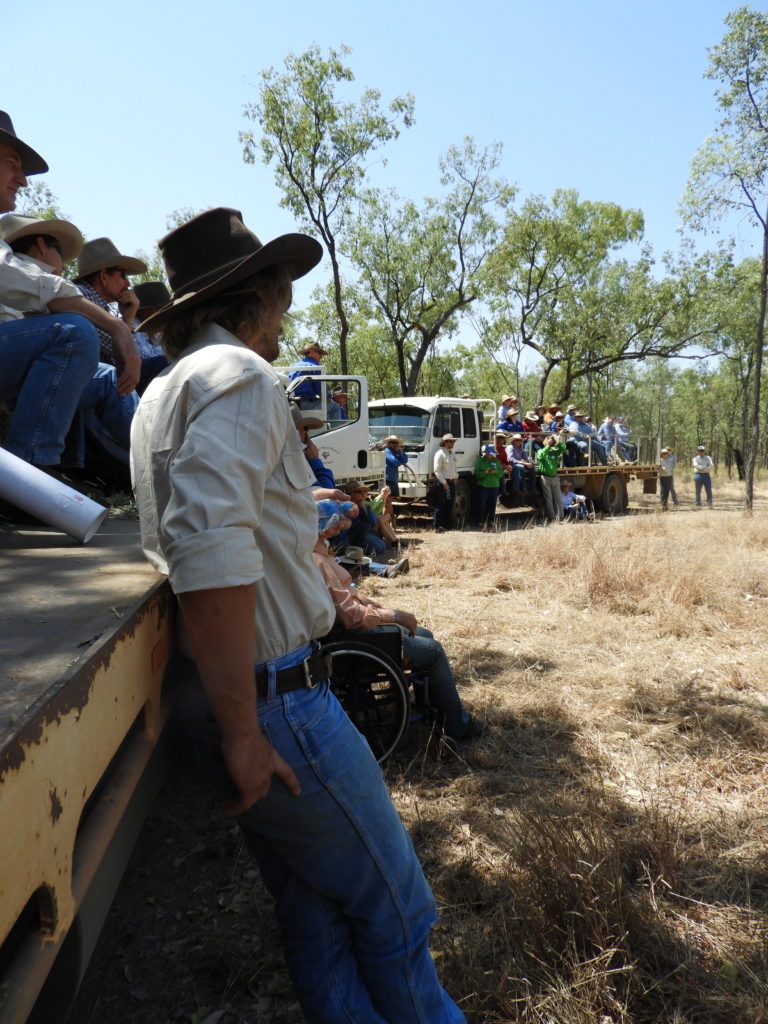Graziers gather where science meets practice
 It was a full house at Wambiana Station, south of Charters Towers in late October, when one hundred graziers and industry representatives gathered for a field day.
It was a full house at Wambiana Station, south of Charters Towers in late October, when one hundred graziers and industry representatives gathered for a field day.
“The field day showed how the management principles developed from this long term trial, like matching stocking rates to available forage, can improve productivity and profitability at the herd and enterprise level,” said project leader Dr Peter O’Reagain, Principal Scientist, Department of Agriculture and Fisheries (DAF).
On the day, graziers got to see how much better pasture yield and species dynamics were in paddocks that had had stocking rates matched with carrying capacity, through the years of below average rainfall.
“A key message is that production and drought resilience are far greater when the perennial grasses are maintained through moderate stocking rates,” said Dr O’Reagain.
“Wet season spelling is also very important for these grasses, but has little effect if stocking rates are too high,” he added.
John Bushell (DAF) presented animal production and economic data to show the benefits of matching stocking rates to forage supply.
“Since 1997, the accumulated gross margins, that is income minus costs, are now two and a half times higher in moderate compared to continuous high stocking rates. In addition, moderate stocking rates and reducing numbers early in poor seasons not only gives far more options for managing drought, but presents opportunities to increase production in other years,” said Mr Bushell.
Throughout the day a number of other presenters gave further evidence of the relevance to northern breeding herds from the Wambiana Grazing Trial.
David and Donna Rankine, graziers from Bunuro, Torrens Creek, discussed how they are achieving relatively high productivity in marginal country, by matching stock numbers with forage supply using grazing charts. They also use mob grazing to maximise rest in paddocks, apply significant selection pressure when selecting bulls and keep good animal performance records to ensure herd efficiency is maximised.
Ian McLean from Bush Agribusiness, highlighted the key indices of top performing beef businesses in northern Australia. He said a key determinant was matching stocking rates to forage supply.
Field day Chairman, Doug O’Neill of ‘Mt Oweenee’, summed up the day: “This is the longest grazing trial in Australia. It provides the science, and when we get together at a field day like today, we have the chance to put that science into practice through our practical experience.”
The Department acknowledged and thanked all those who contributed on the day, especially the Lyons family who hosted the event on their station, neighbours and local Charters Towers businesses.
Funded by the Department of Agriculture and Fisheries (DAF) and Meat and Livestock Australia (MLA) the Wambiana Grazing Trial has been running for over 22 years and focuses on managing beef production in a variable climate.
To find out more about grazing and animal management to build up your enterprise, or for information on the Wambiana Grazing Trial, please call DAF on 13 25 23 or visit the Wambiana Grazing Trial project page.